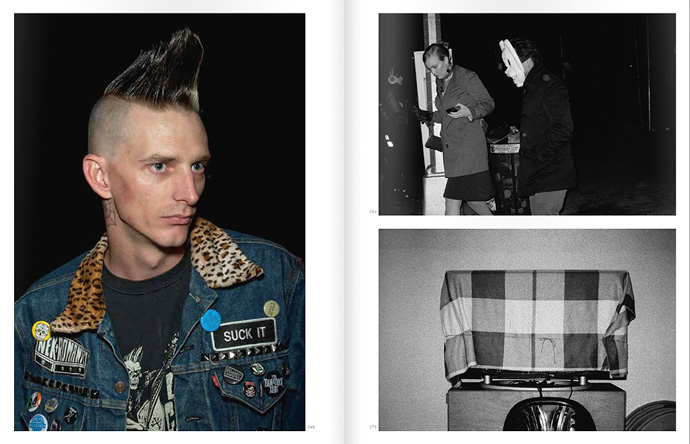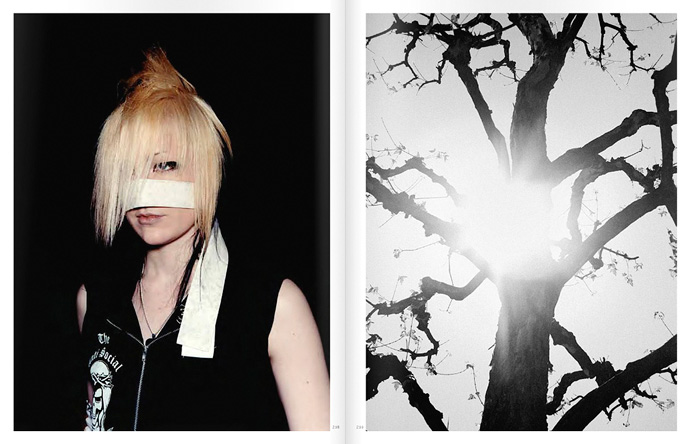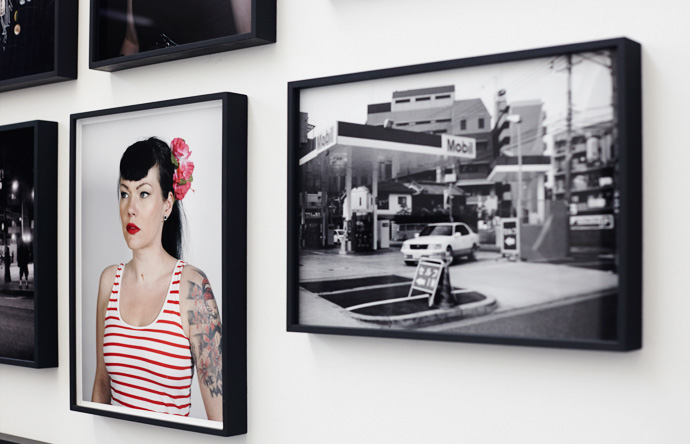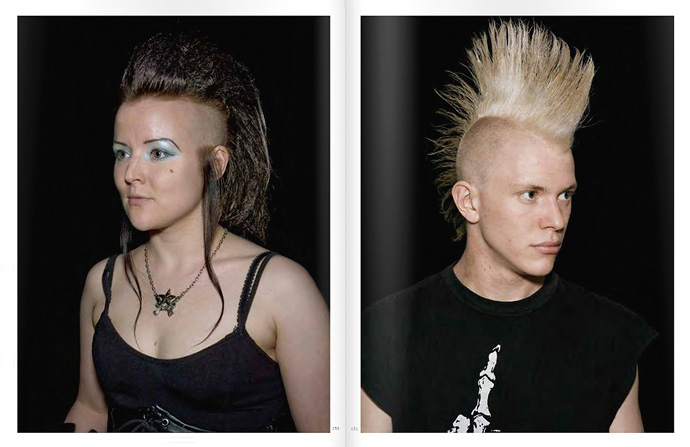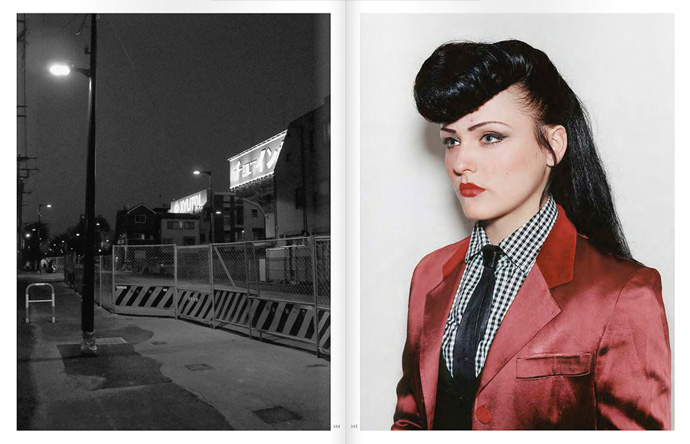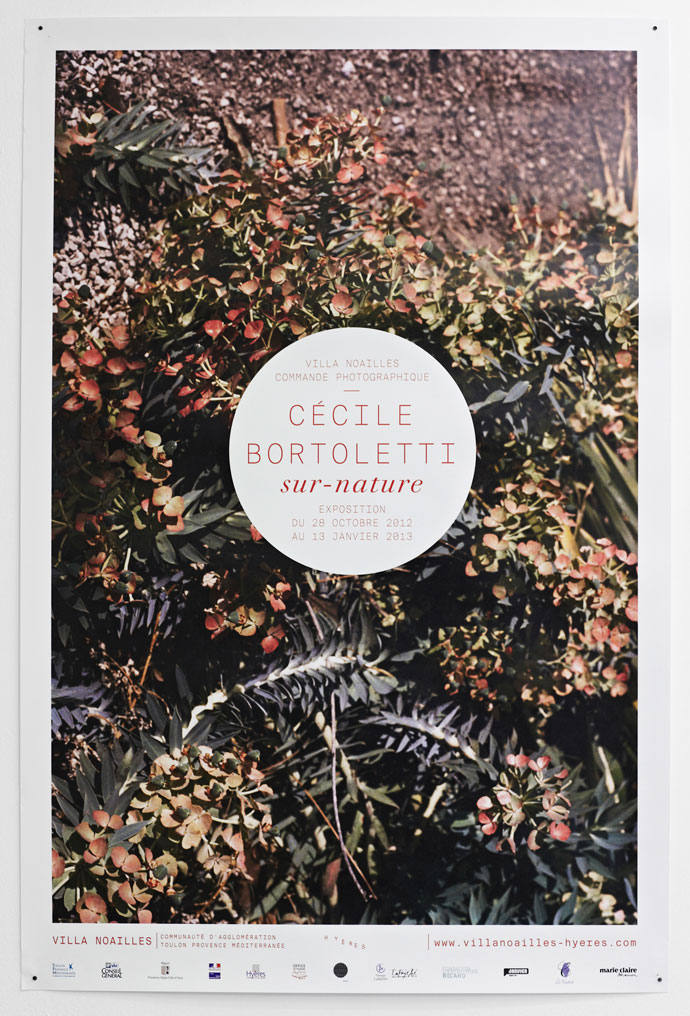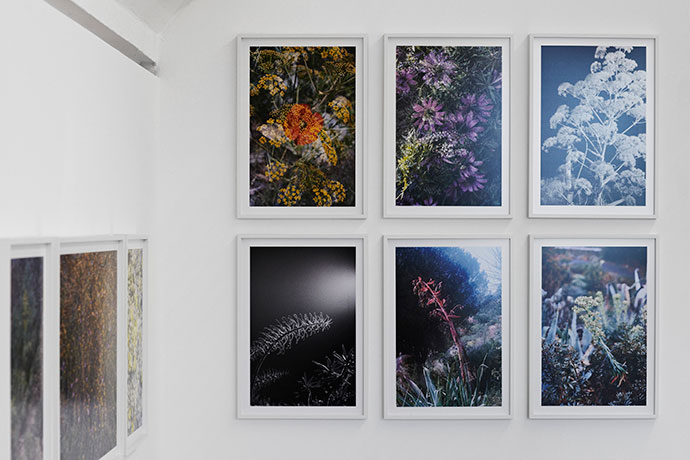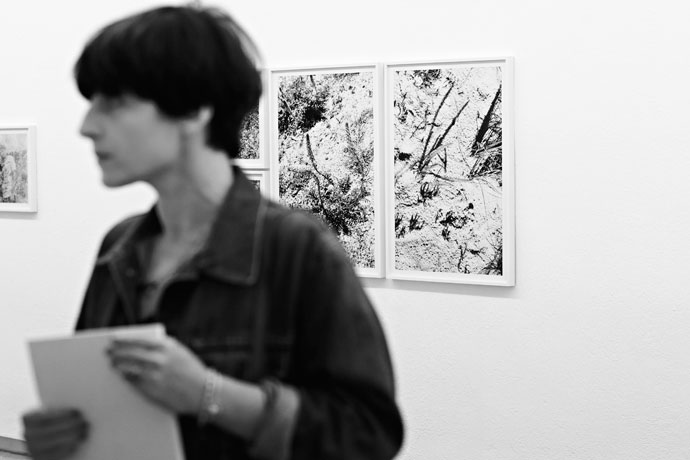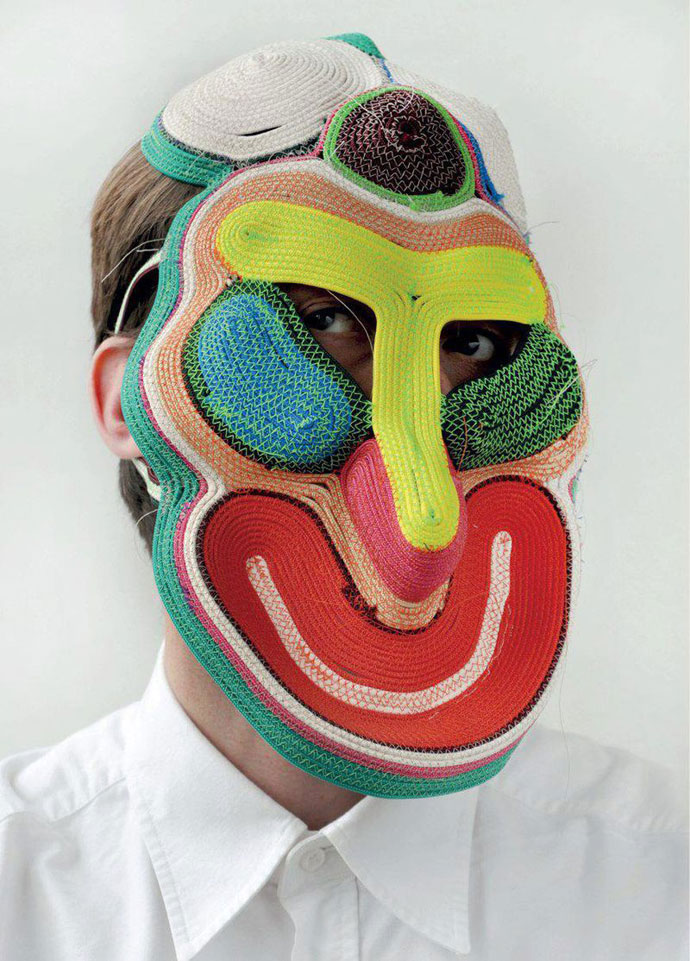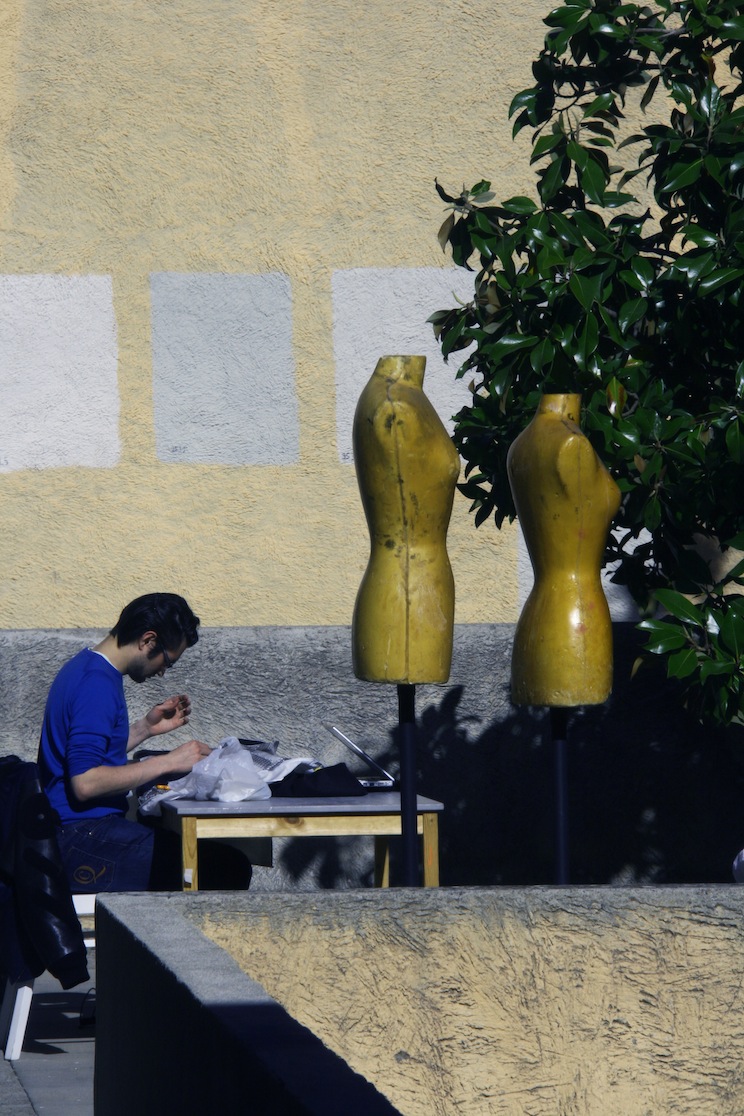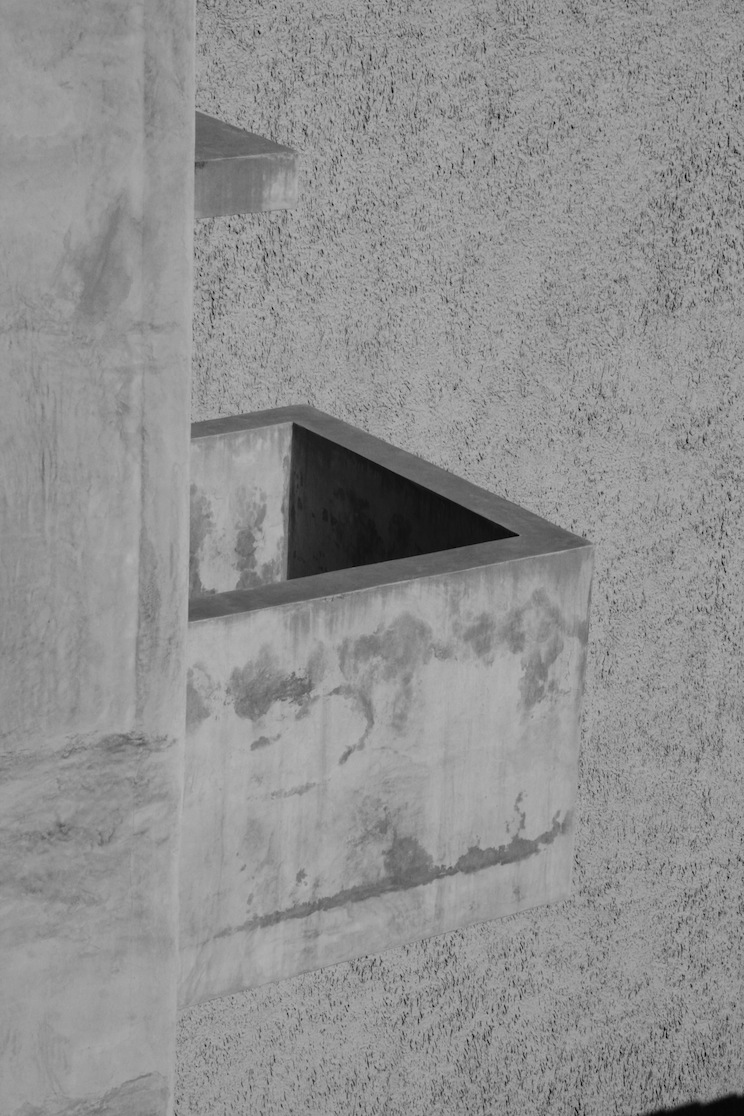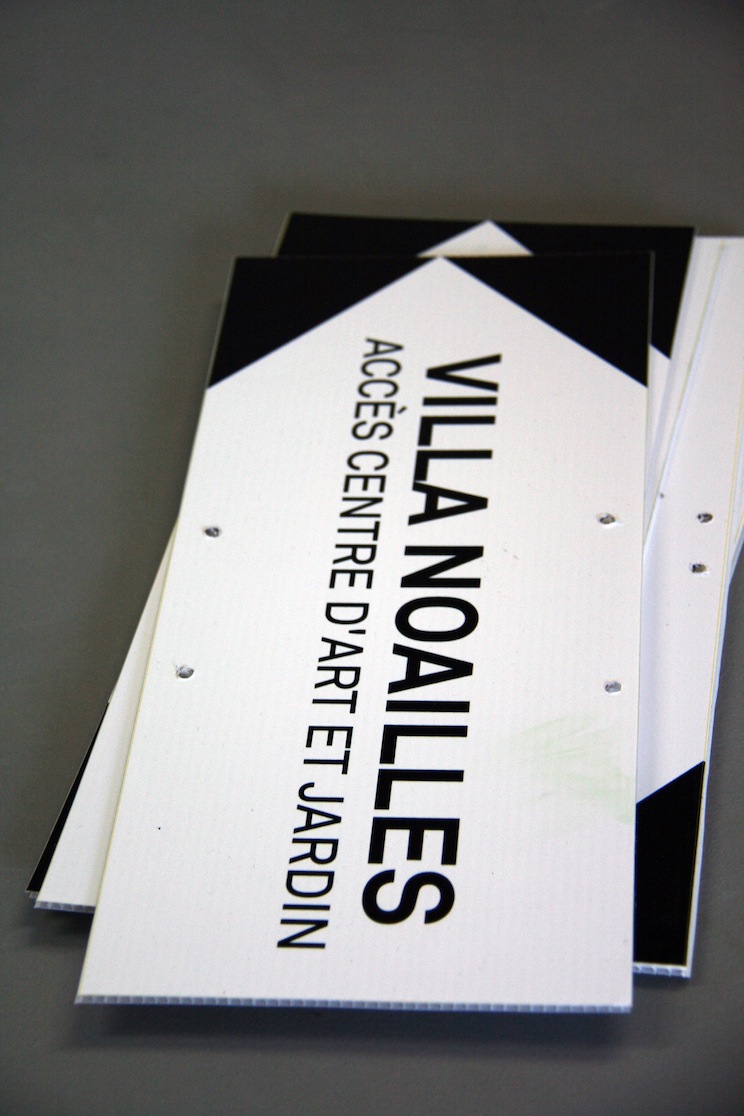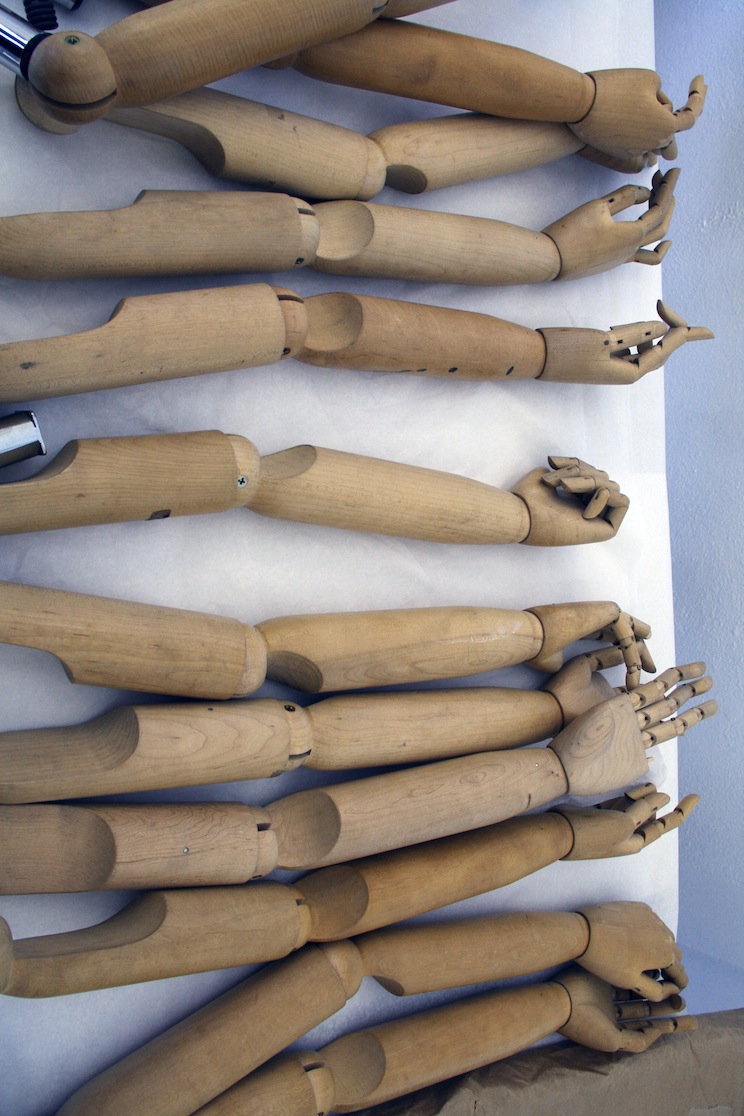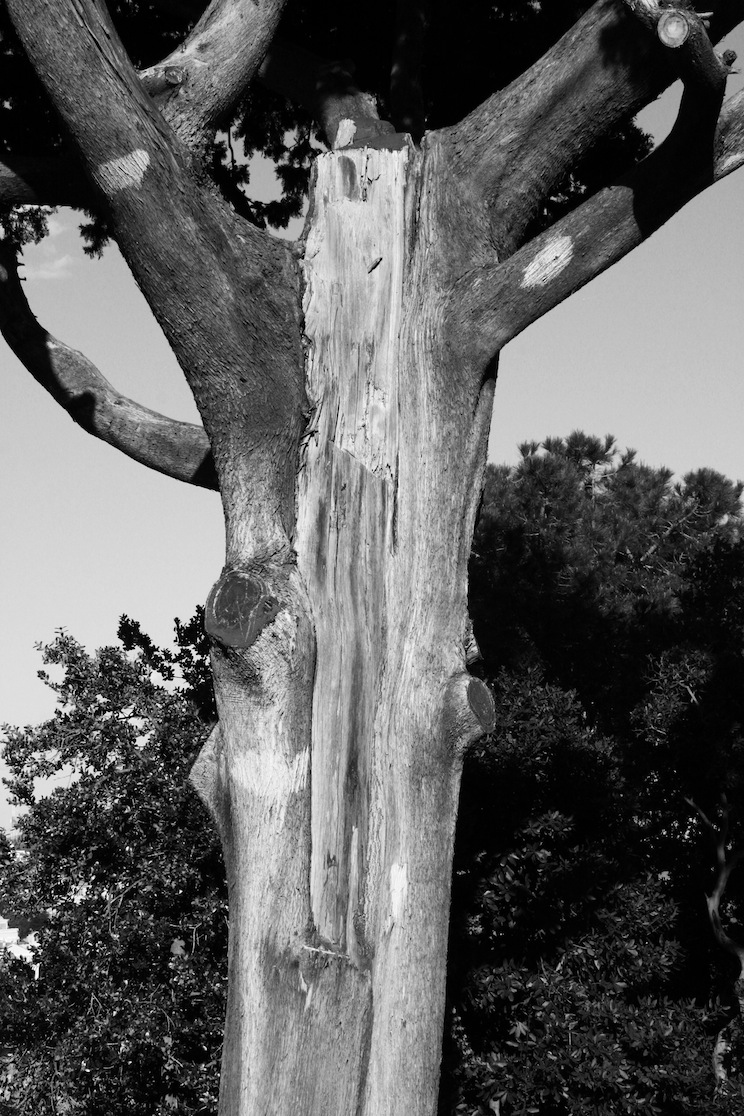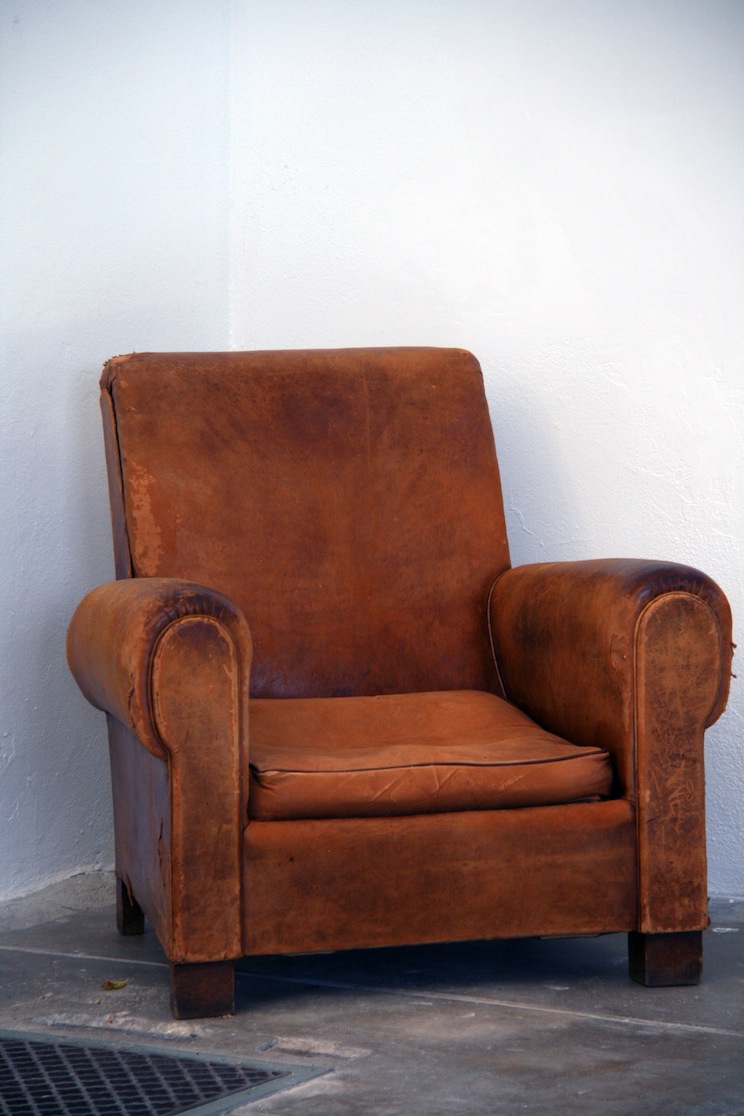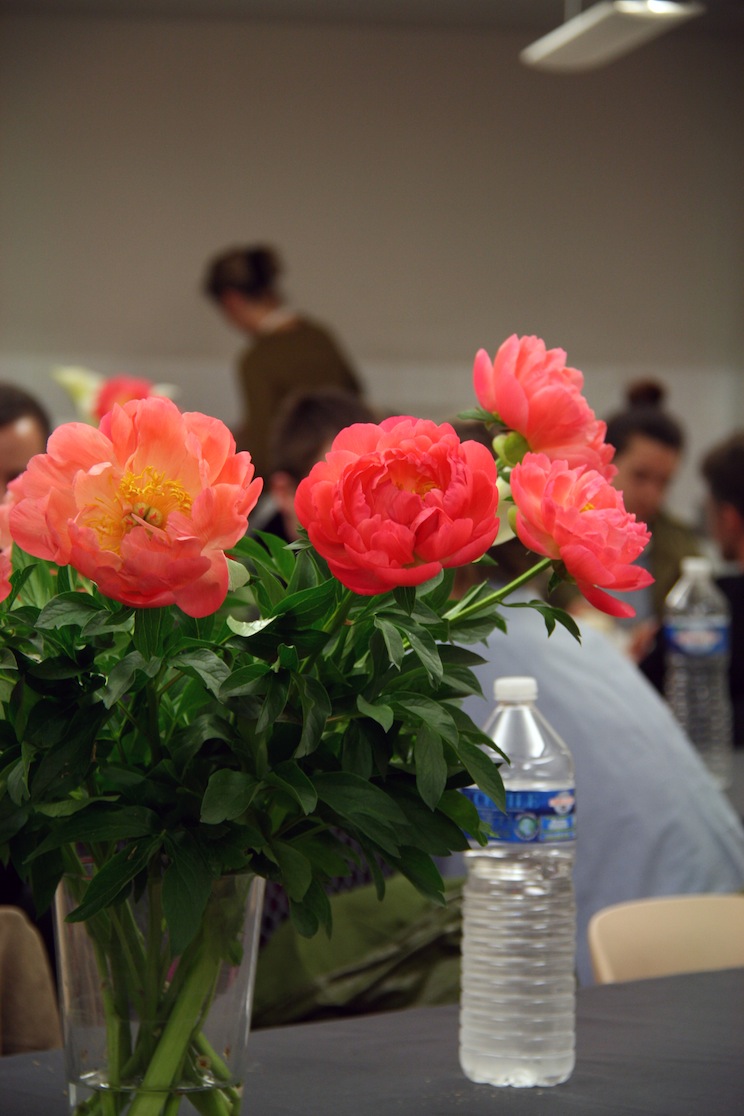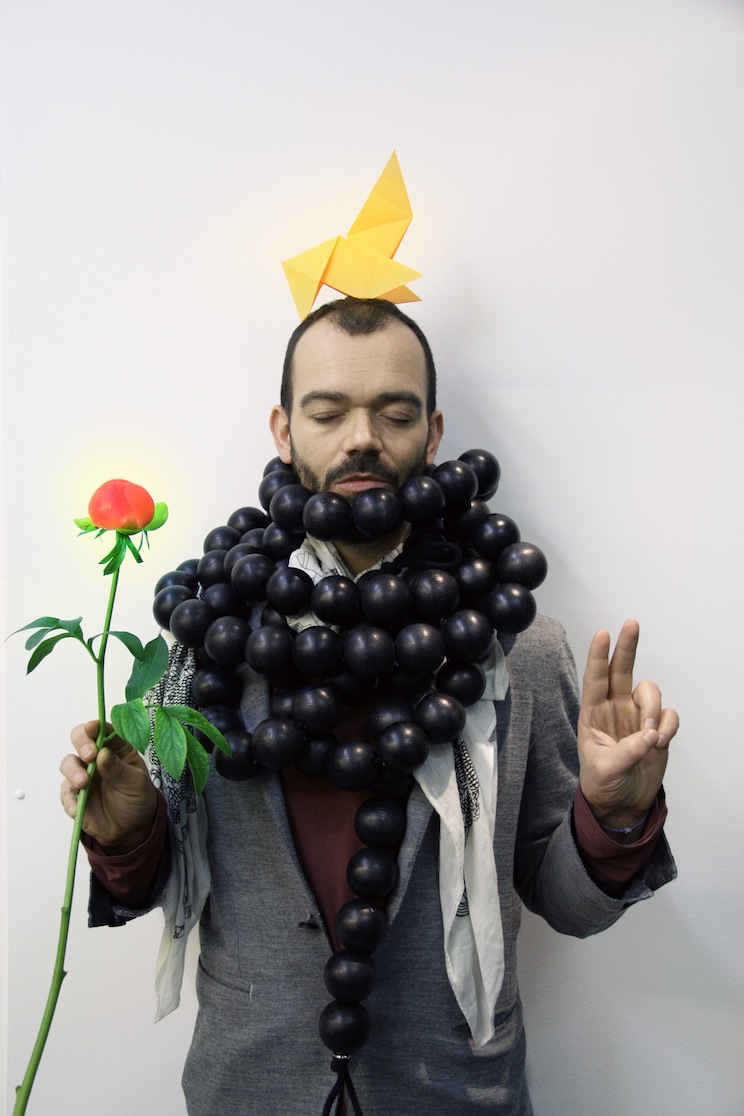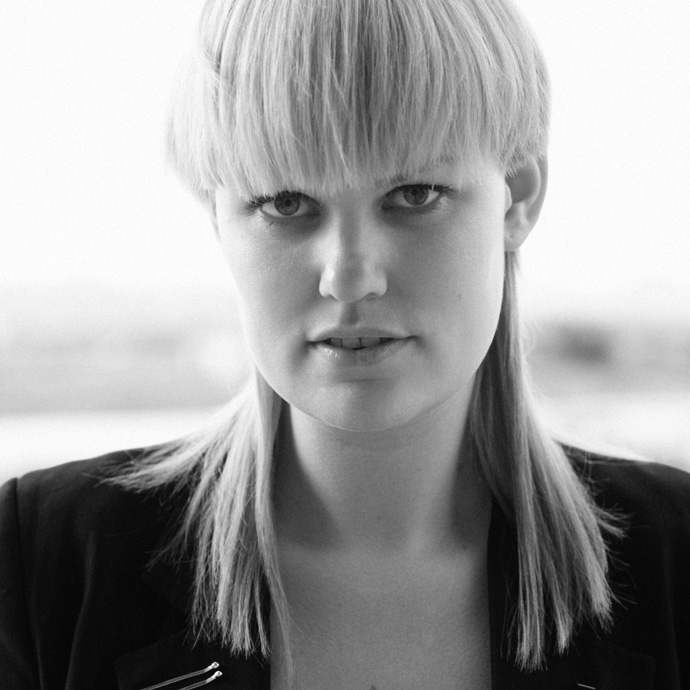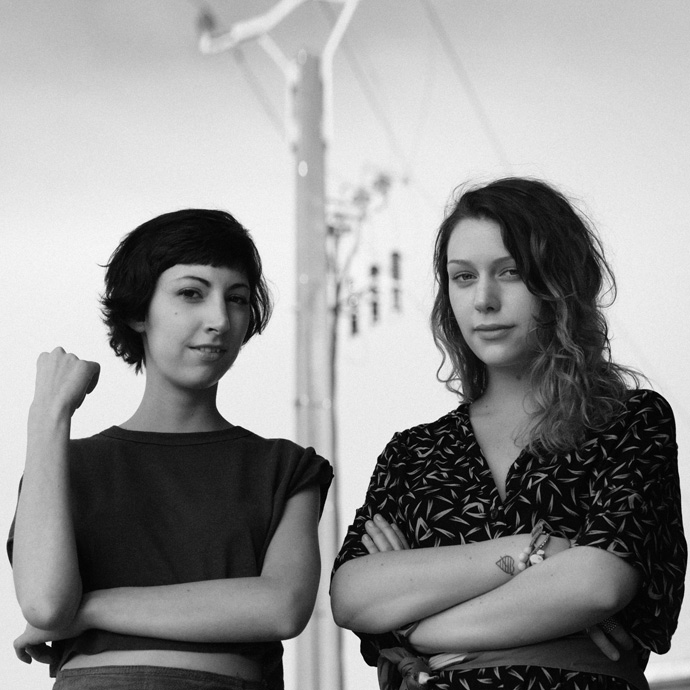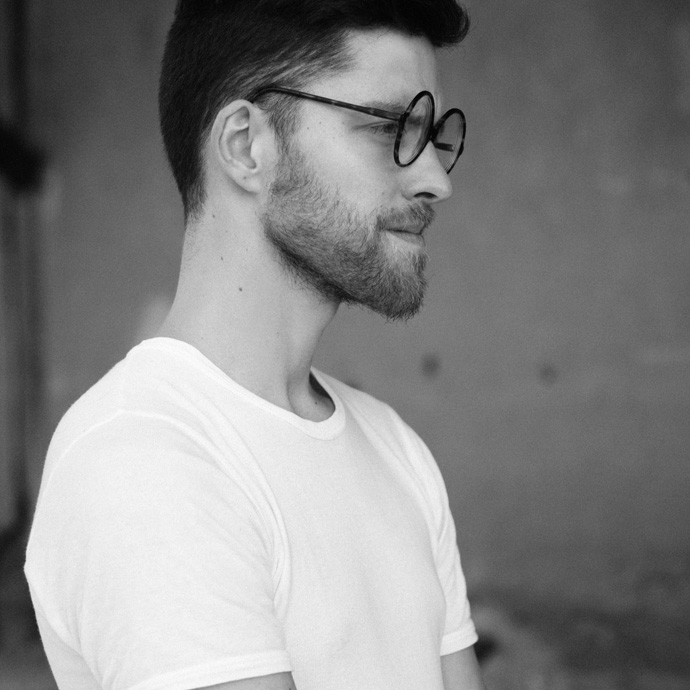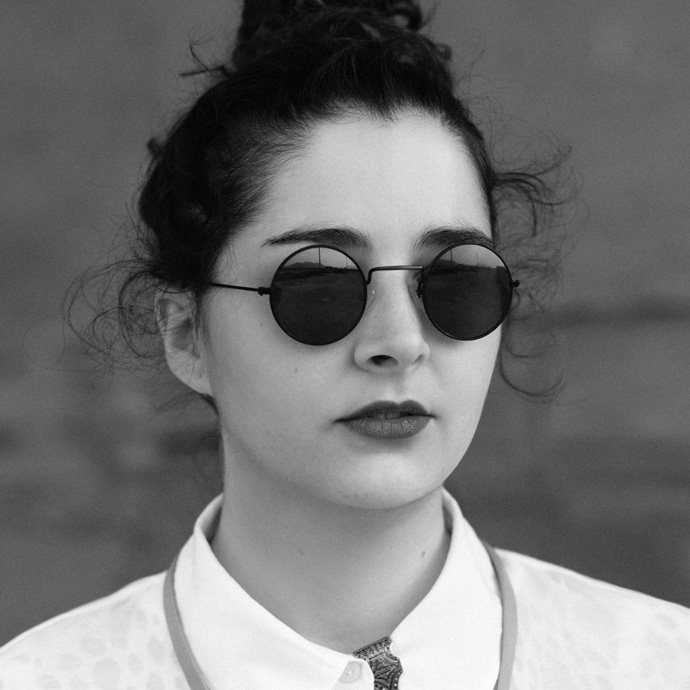-

OLIVER SIEBER – “THE NEW FUCK YOU”
-America, Asia, Europe… each continent spawns its own counter-cultures, centered for the most around music scenes. From these subcultures, Oliver Sieber creates an “Imaginary Club” composed of goths, punks, skins and rockabillies – irrespective of their cultural demarcations.
About 100 photos define the perimeters of Oliver Sieber’s “Imaginary Club, portraits taken in a makeshift studio of concerts, festivals and in clubs, and juxtaposed with black and white shots of deserted rehearsal spaces, street shots and club entrances.
Oliver Sieber’s “Imaginary Club” is exhibited at the Villa Noailles in Hyères as part of the 29th International Fashion & Photography Festival, a variation on his most recent book of same title. While setting up this exhibition, Oliver and his collaborator Katja Stuke spoke to The Stimuleye about the need of upheaval, total erosion of style and dress codes in youth culture and the need to find new forms of expressing positions of identity.
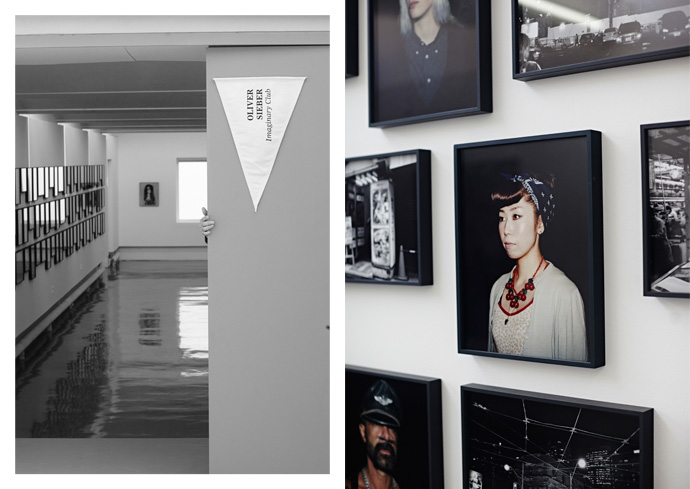
Oliver Sieber, "Imaginary Club": Exhibition at Villa Noailles, Hyeres
THE IMAGINARY CLUB
The Stimuleye: Who are these people in your “Imaginary Club”?
Oliver: What really interests me is reaction and forms of counter culture.
After WWII, the teenagers in America and England started to discover new forms of music and fashion, new forms of liberation. Many people I met are still in this sort of idea. Punk is a very good example, because it did have real societal meaning.That is what is important to teenager culture: upheaval, the struggle to identification, to root themselves. To not only take position against the elder generation, but in general. And that has often to do with music. I am interested in music, and communication of style codes.
The people in my “Imaginary Club” are not always part of a subculture in the classic sense. I have also portrayed artist friends, that, similar to teenagers, are forced to redefine themselves again and again. Here for example is a photo of Rebecca. From a wealthy family, she received always best grades, suddenly something switched in her head. Rebelling against her intellectual parents, she was climbing down the eaves gutters and was not to tame anymore.
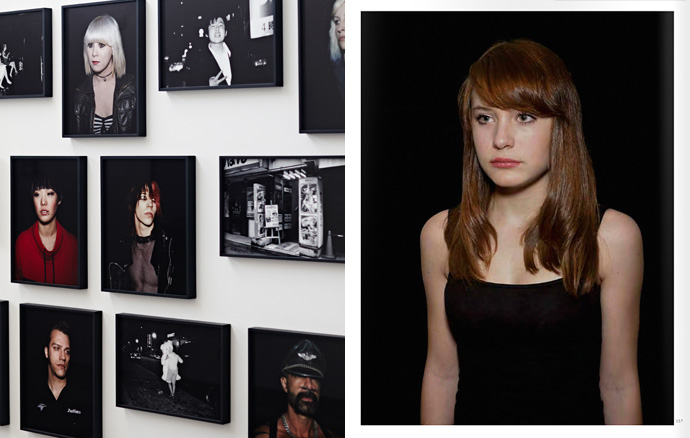
Oliver Sieber, "Imaginary Club": Exhibition at Villa Noailles, Hyeres. Right Side: Rebecca
When I look at my work, I understand it as an entry for the viewer, or a window upon which I reflect myself. Often it is not really about what is on the wall or who is depicted, but about the dialogue between the image and the onlooker. That changes from person to person.
The Stimuleye: Looking at the Portraits there are many Punks, Skinheads, Rockabillies.- is there also something a bit like nostalgia?
Oliver: We have a very globalized music culture today. Subcultures developing real novelties is something rather sparse and rare. Are there really subcultures that result from youth movements? I think it is not like that anymore. It’s more that youngsters try to identify with their role models of choice.
A good example is David Bowie that in the 70’s offered an image of “multi sexual liberation” for many people, also in combination with music and the song texts that bore a poetry and language that people picked up on. Just because we have 2014 now, his music did not disappear. You can still buy the records and the language still speaks to people who want to identify with it. And as fans do, they associate themselves with this. I think people living this don’t reflect on what they do, as we look at it. They just do it.
Katja:
There are always new aspects adding up and things get mixed up. So you have a development that can’t be called the “nostalgic”. It may be rooted in a source, and like in this case ideally there is a progression where new aspects ad up.Oliver Sieber, excepts from the book "Imaginary Club"
FASHION CODES AND THE INTERNET : THE NEW “FUCK YOU”
Katja:
Today you often cannot rely on the looks giving an indication on who people are: In Germany you find nazis that look like left anarchist “Antifa” fighters.
That possibly has to do with the internet, where you can communicate your stance or orientation in different ways then through fashion and dress codes.
You also have to react on other people adapting what you personally take serious as a subculture, how they mix your codes, abuse or pervert them.This makes it sometimes also difficult to determine whom are you following in a protest, where codes are so mixed up, that no one is able to keep up track.
For example in Ukraine its absolutely ambiguous who is protesting with whom recently. Unlike in the past, today it’s hard to determine who is on which side, from demonstrator to counter protester. Now you have young Nazi Hipsters in all black with tight jeans shouldering a jute bag, which really requires more than a second look to recognize what is going on.In this position you’re forced to find other forms to show your conviction that are different and function without the need of fashion as we had it in the past.
I am sure there are subcultures, but they function really differently, without the involvement of fashion, as the channels are much more multi layered. It’s not about provoking through your look anymore, because nowadays people are not easy to shock. So you have to find other ways and places to put your orientation forwards.Oliver Sieber, excepts from the book "Imaginary Club"
Oliver: In Japan a lot of messages get transported through flyers and stickers. This was similar in Los Angeles up until recently, but it changed and is now functioning mainly through hotmail panels. Everyone has a smartphone, no matter to which group you belong. The Cosplay culture for example functions only through the forums in the web. That’s all chat, appointments for conventions and Skype.
Katja:
But the internet is not at all as public as you may expect.
Often it’s very difficult to access a certain online group or forums. There are strict admins that want to know who you are and what you do, and remind you that with access you commit to a regular contribution etc- so you can’t just get in and check out. It’s much easier to go into a bar or a club, even if you have to pass and convince the bouncer.Oliver:
For example I photographed a young punk who realized how his style had been adapted and declared a trend. He totally changed his appearance to not be associated with this widely publicized new trend. That doesn’t mean though that his anti-ascist conviction or adoration for punk changed at all.As label and the designers pick up on elements of subculture their message is watered down extremely fast, so you have to have to change your codes again. As Jason (Evans) recently said at the Tate: “The new normal is the new ‘Fuck You,'”, because you can’t be categorized like this anymore.
Oliver Sieber, "Imaginary Club": Exhibition at Villa Noailles, Hyeres
PROTEST
Oliver:
That there is a new protest culture again is really great. These positions are getting from the internet to the street again, where you suddenly have to make an effort, as the codes we’re used to don’t work anymore when you can’t diversify between “good” and “evil”, nor recognize “your” or “my” people.Katja:
At the same time there is also these movements of parallel culture to create an existence and surrounding of some sorts of withdraw, even resigning.
This may be an approach resulting from being overwhelmed by societal developments. Specially in Japan we’ve met people that engage in small initiatives, artistic ones or others that take care of the homeless. There is this movement of “do it yourself” culture where people search for new forms of living for themselves apart from mainstream, norms and social graces, which are less visible.Oliver:
When visiting Osaka soon for another exhibit, we plan to investigate deeper into this, meet with these “alternative” people that found a totally different life and structure within of Japanese society.
What I found puzzling was that we met many homeless who spoke great English or Spanish, and had lived and worked abroad, but this had lead that they were not fully integrable any more into society, because the’ve been abroad too long and back in Japan landed on the street.Katja:
I think that also has to do that people with knowledge of languages have access to much more information over the internet for example, and thus are more open to ideas to try a different draft for their life than their parents, because that didn’t work that well either.
Specially as you can’t rely on social securities anymore- it’s not like our parent generation that studied, took a job and continued with a great retirement plan.Oliver Sieber, excepts from the book "Imaginary Club"
The Stimuleye: How do you work together?
Katja:
There are varying methods, but at times there are actual connections or a common greater theme and possibilities to juxtapose our work in an exhibition or we publish a book together for example at BöhmKobayashi.The City of Duesseldorf has provided us with a space we curated for three years where we developed “ANT!FOTO” which was to show exhibitions on positions of photography we feel were missing. As a result we also started a publication the “ANT!FOTO Manifest” which was a common project of us.
Oliver:
The “ANT!FOTO Manifest” was a project where we asked 70 photographer and curators to word their statement after a 10 point thesis we created. Initially this was planned only as a magazine, but finally will be shown in the Museum Folkwang as well as going to the
Fotomuseum Winterthur .The Stimuleye: What is the last thing that stimulated you?
Oliver:
After we talked so much on imagery, I would like to mention something that stimulated me:
when we talked to Frenkie (Bosnian Rapper) while visiting him in Tuzla, i asked him what is “heimat” (homeland) to him.
He said after being a refugee returning from Nuernberg to Tuzla, he realized what he missed: it was the scent of the firing wood that you can smell everywhere in the city. For my senses, apart from sound or music, the smell is very important.Oliver Sieber, excepts from the book "Imaginary Club"
Imaginary Club 2005-2012 432 pages, Offset-Print, a BöhmKobayashi/GwinZegal Joint
Imaginary Club is running at the Villa Noailles in Hyeres until may 25, 2014 and after that at the Galerie Stieglitz 19 in Antwerpen. Opening May 25, 2014, further dates are at PhotoBookMuseum from August 19, 2014 and after that the Exhibition will be travelling
10 -

cécile bortoletti: homodiegetic serendipity
-Beyond its famous fashion & photography festival, Hyères’ Villa Noailles hosts throughout the year a number of photography, fashion, design, architecture and film-related events.
For the annual photography commission, fashion photographer Cécile Bortoletti captured the Mediterranean flora of Hyères over the course of one year, her visions now revealed to us in a new exhibition, “sur-nature”…
Sur-Nature exhibition poster. Picture by René Habermacher.
Antoine Asseraf: The title of the exhibition is “sur-nature” [“over-nature”]…
Cecile Bortoletti: It’s a contraction of “super-nature.”AA: But there’s also a reference to the super-imposition which takes place in some of the pictures…
CB: It was rather complex to get a complete vision of nature around Hyères, very bountiful, luxurious…I live in the countryside, i take pictures of special moments, but to do something like this, like a one year long walk, I had never done. I had done a series of trees at night for a UNESCO/CNRS exhibit about black matter, with a more scientific aspect, but it wasn’t so scattered in time, with all the seasons, like this project.
RH: What was the challenge compared to your editorial work ?
CB: Managing time… I’ve never worked one year on a project. Even if you know the end date, the exhibition date, it’s difficult to manage it. When you work in fashion, you’re on an addict schedule, everything is last minute, very fast.And here i was working alone, with a lot of time, many kilometers to explore, time to think, changing weather and moods, and each time I came I thought it was better than the previous time.
It’s a matter of stimuli. I learned many things but I was happy that it ended, it was very intense.
Sur-Nature exhibition view. Photo by René Habermacher.
AA: You’ve come to Hyères for a long time… did some things still surprise you ?
CB: Now I know it much better, I can find my way, and I’ve discovered the salt marshes and its flora, with impressive survival strategies. I didn’t know about that at all, it was a bit like desert flowers…They’re emotional because they look fragile but in fact they’re tough.As a whole the exhibit shows the fragility of nature, because many times one week later flowers I had shot would no longer be there.
Cécile Bortoletti and the salt marsh flowers. Photo by René Habermacher.
-

design parade 7
-When we say “Hyères” we often mean “the fashion and photography festival” organized by the Villa Noailles.
But we shouldn’t.
Because for the last 7 years, there’s been another “Hyères” in Hyères :
Design Parade.10 young design-ers, eye-popping exhibitions dedicated to furniture and industrial design, a special focus on the art brought back by the Noailles’ African expeditions in the 30’s, and already a spin-off event, Tapis Parade (Carpet Parade).
Design Parade 7.
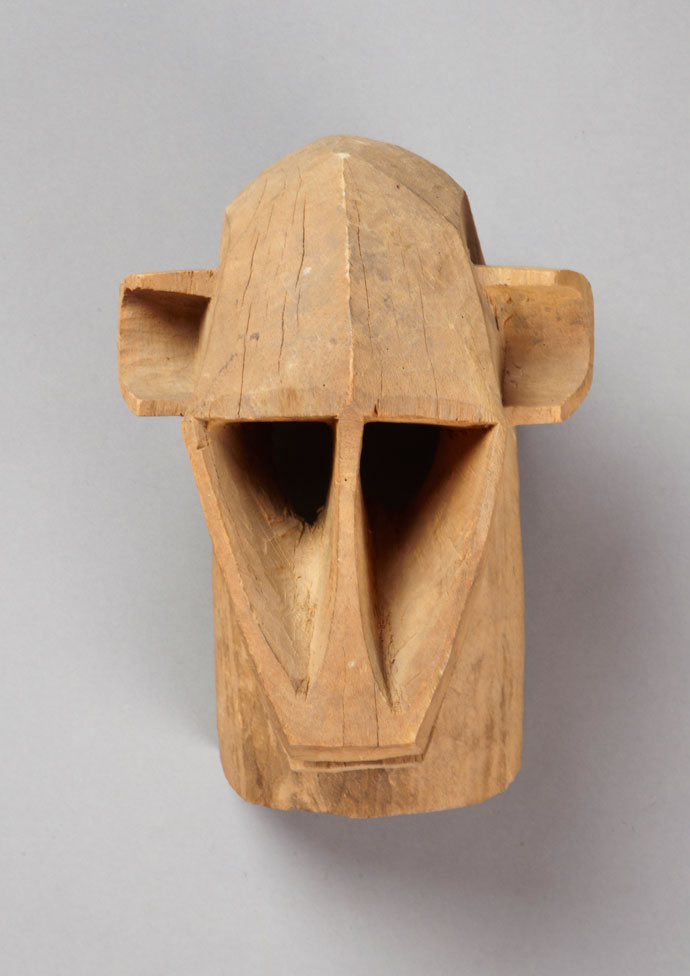 «Dege» Mask, Dogon, collected at Opti, Mali, in 1931, 'bois de tage', Musée du quai Branly.
«Dege» Mask, Dogon, collected at Opti, Mali, in 1931, 'bois de tage', Musée du quai Branly.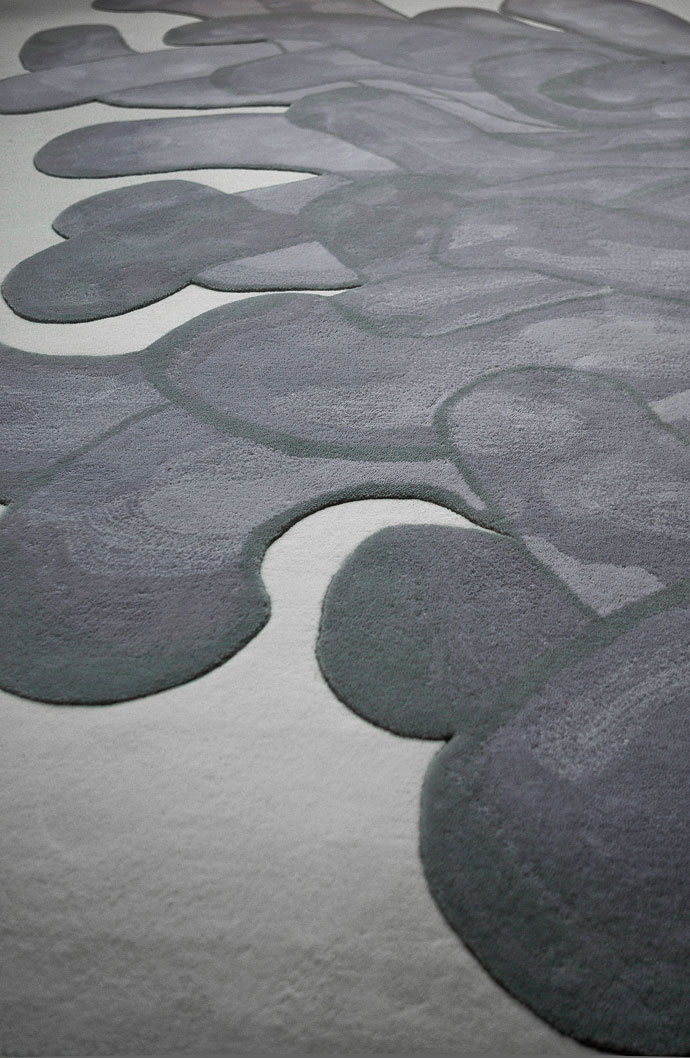 TAPIS PARADE - Anémones Jekyll, François Dumas, La Chance.
TAPIS PARADE - Anémones Jekyll, François Dumas, La Chance.
 Daedaleas, Fanny Dora © Charles Negre, ECAL 2011.
Daedaleas, Fanny Dora © Charles Negre, ECAL 2011.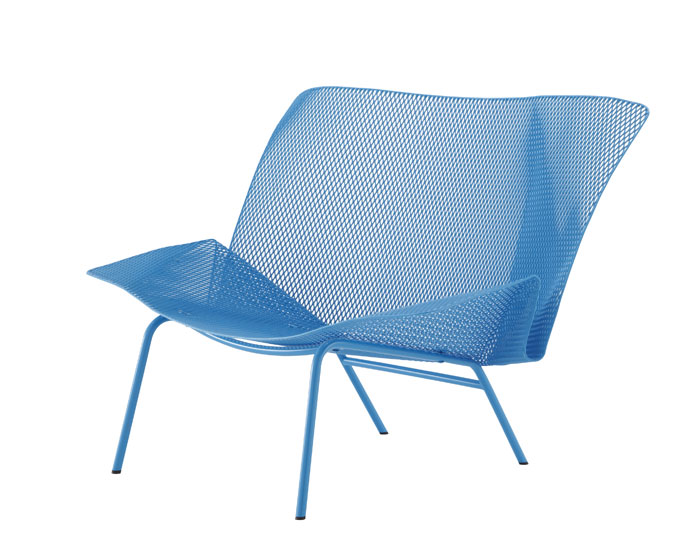 Grillage, fauteuil, François Azambourg, Ligne Roset © Jean-Pierre Lemoine.
Grillage, fauteuil, François Azambourg, Ligne Roset © Jean-Pierre Lemoine.Design Parade 7
Opening Friday June 29th
Until September 30th.
Villa Noailles, Hyères
Var – France. -

hyères just a taste… entering Villa Noailles
-In a few days, one more Hyères Festival will be taking place at the Villa Noailles.
The house is an exceptional building amenity that combines amazing spaces, light, the most amazing view of the Hyères peninsula, the most romantic botanical garden, with cement paths and staircases, inside and outside whilst cubism is visible on every corner….
-

HYERES ARE THE DESIGNERS
-Below our office window in the mythical Villa Noailles, people sprawl in the gardens, visit exhibits and discover new designers and photographers. Creative stimulation everywhere. The yearly invasion of Hyères, a sleepy town in the Côte d’Azur, is at its peak, with this micro-festival gaining even more attention by the international press.
On the secluded terrasse in front of us, Raf Simons, the President of this year’s jury, sits in the shade of an umbrella having conversations with numerous journalists, while simultaneously the crowds gather and mingle: headhunters, designers, buyers…
Christopher Kane is here, teamed up with Carla Sozzani of Vogue Italia, Jack and Lazaro of Proenza Schouler came in from NY to have a look at the 10 designers’ work.Its Hyères-storic.
All Photographs by René Habermacher
ODA PAUSMA
Netherlands“It’s very much about contrast: My work is always focused around the vulnerability of women. I play with it, I try to hide it or extend, to show it or protect it. This collection is really about my most vulnerable moment because I ended love after nine years of relationship. I thought I should speak about this in my own language which is fashion. In the beginning it was all black. But later on in the process I was getting better and was seeing the good things about my situation:
Life goes on and there is so much in the world, so I said to myself don’t worry so much! The world is sad enough, so bring some light!
So I brought that into the collection by using white and Swarovski elements and my favorite materials silks and leathers, to work the contrast between fluidity and the protective. The silhouette is very tall from the waist on, so it looks a little surreal and dramatic.”
“The last thing that stimulated me was just my surroundings I guess. I am having a lot of fun lately and I am really enjoying this festival: it gives me energy and I want to move on and work and do something with this feeling of being selected and being a little proud to be so. It’s a good feeling, so why not do something with it.”
JULIETTE ALLEAUME & MARIE VIAL
France“We always help each other on our own collections, but this is our first official collaboration.
We met in high school while studying for our baccalaureate in applied arts. After that we pursued fashion design in different schools–I was at Duperre and Juliette was at Chardon Savard. We lived one year apart and then moved in together in order work together. In fact, the collection that we are presenting in Hyères, is a collection that we made during the time that we shared an apartment.
As for the collection…our starting point was a scarecrow. Using the image of the scarecrow we started to explore the feminine silhouette. Eventually we turned this silhouette upside-down and reworked all of the different facets of it. We were also inspired by cubism so, in the collection, there is the idea of a double body–like one body superimposed on another. For example the shoulders have large proportions and are backwards, the skirts are divided in two and are skewed –so all of the body parts are somehow decontextualized. And we see the real body underneath or in the back, usually highlighted with bright colors. All of this creates disproportional, unhinged silhouettes. Plus, the wooden shoes for the collection create a strange walk”.
“The last thing that stimulated us — Well…the festival! And getting the chance to show our first collaboration. Since we were at different schools, we never had the chance to realize a project together and it is the energy of our duo that motivated us”.
www.artifactcollection.tumblr.com
MADS DINESEN
Denmark“I try to make a spirit army with no nations and no faces. My collection is a lot about shame and pride and the feeling of guilt.
It’s also about how to use the past in the present and the future and learn from it. This is my graduation collection. At the university in Berlin we do one each semester but this is the biggest one and the first with so many pieces. Though it’s a men’s collection, I showed it on women as well in the past.”
“The last thing that stimulated me was the film HOLY MOUNTAIN. That’s one of my favorite films. But right now I am looking a lot at Easter bunnies because I saw DONNIE DARKO. I use a lot of film and music in my work and literature.
Holy Mountain was part of the inspiration for this collection but mostly the colonial history of my home country Denmark. Because when I moved to Germany I found out I didn’t know anything about it, so the research for the collection started in Iceland. I went for a residency to Reykjavik and collected pieces of each culture that was under Denmark. It’s more like a typology of cultural pieces that I tried to put together.”
LEA PECKRE
France“The collection that I am presenting is the collection that I presented for my graduation at Lacambre last year. It’s called CEMETERIES ARE FIELDS OF FLOWERS. I am using a lot elements from cemeteries that interest me like wood, tombstones, mausoleums, bouquets of flowers, the contrast between wrought iron structures and the landscape. These elements, reworked in the materials used for the collection, provided me with really organic shapes–somewhat like trees that climb stones in the cemetery for example. There is a lot of embroidery in the collection as well.
Here in Hyères the defilés are much more structured then at Lacambre. But actually, my show at Lacambre was one of the more simple, subdued shows, so the Hyères show fits really well for me. I like when it is rather simple.”
“The last thing that stimulated me last: I want to finish my collection for Hyères! I am developing new pieces reworking some of the existing pieces and I think it will add a lot to the collection and that it will be better.”

